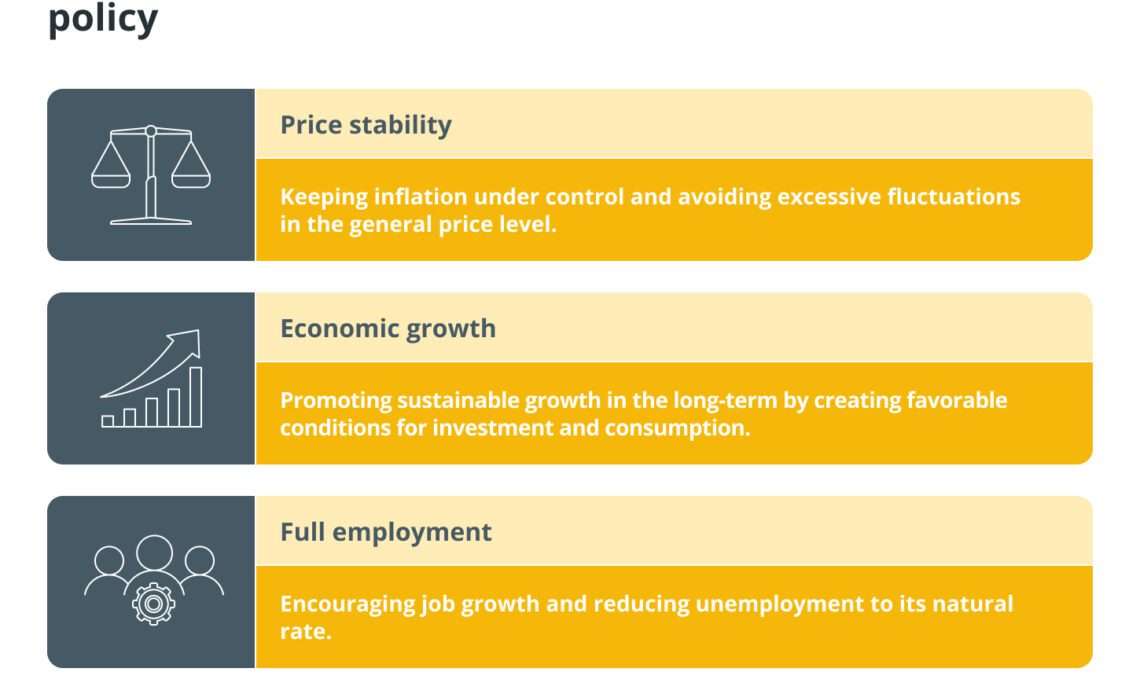What is monetary policy?
Monetary policy refers to the actions taken by a central bank or monetary authority to manage the supply of money and interest rates in an economy, with the aim of promoting economic growth and stability. To affect the price and accessibility of credit, this may entail altering the money supply, setting interest rates or utilizing other instruments.
The ultimate goal of monetary policy is to achieve and maintain a healthy economy. This usually involves balancing multiple objectives, such as:
To ensure economic stability, lessen the effects of economic shocks and promote sustainable economic growth, central banks carefully control the money supply and interest rates. However, depending on the unique circumstances and requirements of each economy, monetary policy’s exact goals and tactics may change.
Types of monetary policy
There are two main types of monetary policy:
- Expansionary monetary policy: The goal of an expansionary monetary policy is to boost the money supply and promote economic expansion. Lowering interest rates, expanding the money supply and easing reserve requirements can all be used to achieve this.
- Contractionary monetary policy: It aims to decrease the money supply and control inflation. Raising interest rates, reducing the money supply and boosting reserve requirements can all be used to achieve this.
Different types of monetary policy tools
The tools used to implement monetary policy can be broadly categorized into three types:
- Open market operations: This involves the central bank buying or selling government securities in the open market to increase or decrease the money supply.
- Interest rates: The central bank can change the benchmark interest rate, which is the rate at which banks can borrow from the central bank. This influences other interest rates in the economy, affecting borrowing and spending.
- Reserve requirements: The central bank can change the reserve requirements for banks, which affects the amount of funds banks must hold in reserve and can lend out.
Other tools used less frequently include discount window lending, moral suasion and direct controls on bank lending.
Monetary policy of fiat currency vs. monetary policy of cryptocurrencies
To achieve macroeconomic goals such as price stability, full employment and economic growth, central banks like the Federal Reserve in the United States set and implement monetary policy for fiat currencies. To affect the money supply and demand in the economy, central…
Click Here to Read the Full Original Article at Cointelegraph.com News…
